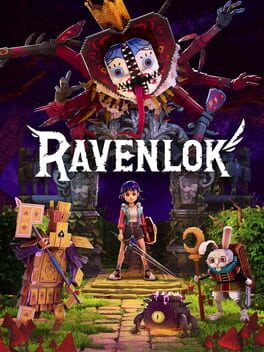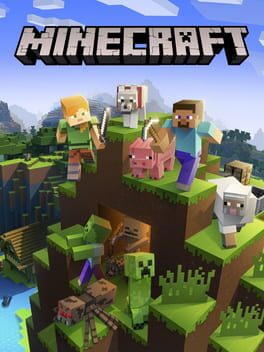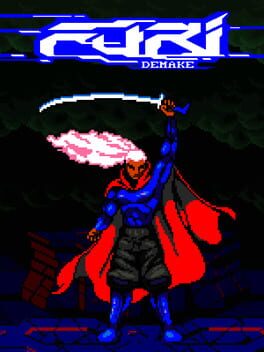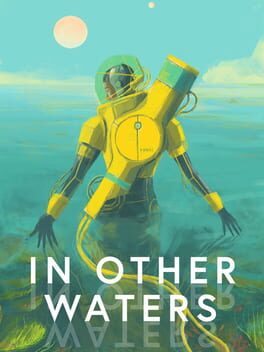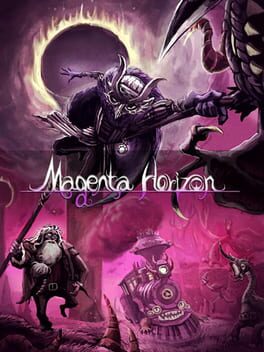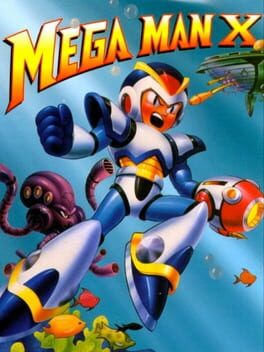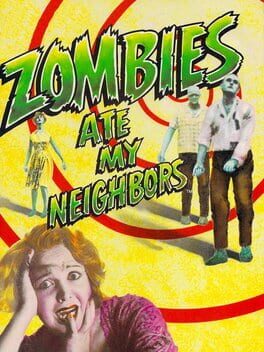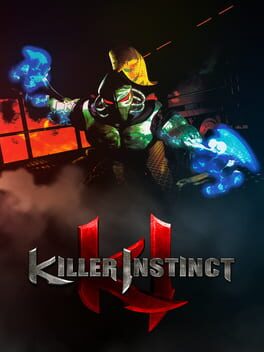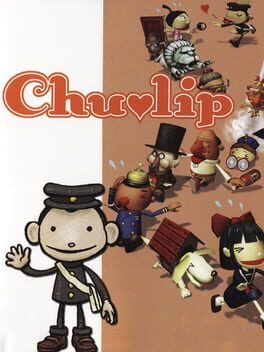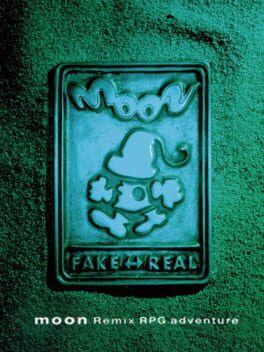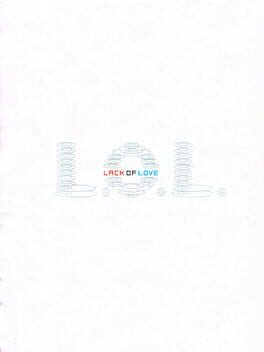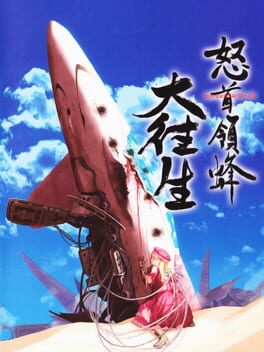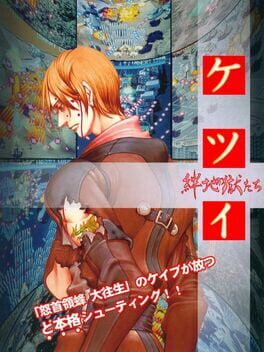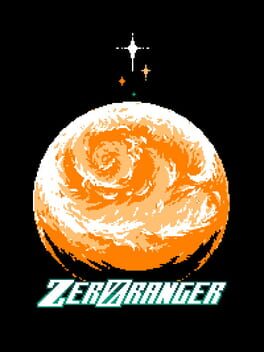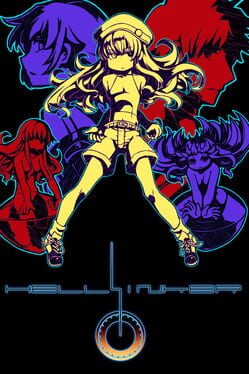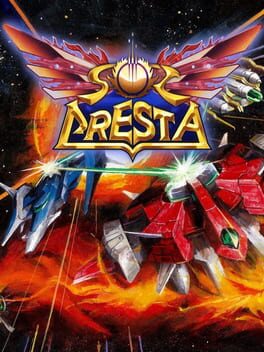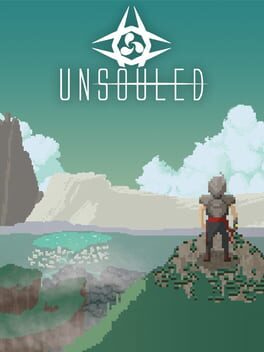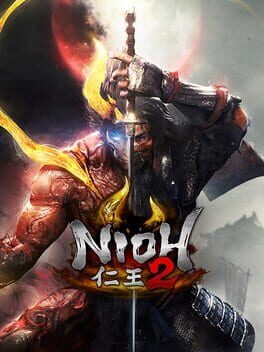IceNinja
8 reviews liked by IceNinja
Ravenlok
2023
I’m sad to report that outside of the graphics there is absolutely nothing interesting about “Ravenlok”. And for some it may be enough - the levels, the enemies, the NPCs are all well designed, very colorful and clearly drawing inspiration from the craziness of “Alice in Wonderland”. It’s very pleasant to look at and the environments are varied.
Those beautiful environments are populated by forgettable NPCs that spout out the most unimaginative lines about saving the kingdom and a bad witch, the plot throwing you from one level to another just because you need to reach the next macguffin, and a protagonist that lacks any characterization or opportunity to make any meaningful choices (you can level up your character and the menu resembles that of an RPG, but this is not at all a representative of the genre).
The combat - unlike in Cococucumber’s previous game, “Echo Generation” - is real-time, and feels very undercooked. There is one type of attack you can do with your sword plus 4 special attacks that you gain access to throughout the game. You can also dash and use your shield, however I don’t recall using the latter outside of the early training section. The simplicity of the combat systems makes fighting your enemies feel like a chore from early on, especially since the game seems to take great joy in throwing dozens of them at you regularly. It’s also fair to say the enemies aren’t too varied - you basically use the same tactic for all of the encounters, i.e. use your ‘specials’, dash around while waiting for them to be available again, repeat. There are a good number of boss fights that provide some desired change, but they’re usually too easy and the baddies go down on the first go without too much of a hassle. And yes, even on the highest difficulty the game is way too easy.
There are also some odd design choices regarding the combat system, e.g. there is a stamina bar that only gets depleted when you use the shield. When you attack, use your special attacks or dash around the stamina doesn’t seem to be affected at all, which takes away the necessity for strategizing your movements - think of the most obvious point of comparison, i.e. the soulslikes, where it’s an extremely important part of the game. It’s a shame, because otherwise it would’ve added some flavor and challenge to the combat which is rather plain and boring as it is. You also can’t lock on enemies, which is a nitpick, but I always like having this option in games with melee combat.
The game contains a handful of puzzles, most of them quite easy, which is a shame since had the developers put more emphasis on them at the cost of the combat sections, the game would’ve had a much better flow and the mediocrity of the combat could’ve stood out less. There are also some pretty poor stealth sections that try to break the monotony, but since there is no way to figure out the enemy’s visibility cone they prove more annoying rather than a meaningful way to expand the gameplay.
The quest design is lackluster as well. You’ll be mostly asked to slay X enemies, collect Y items or something of the like. The exploration is also rather limited, with the only real collectible being small rabbit figurines in front of which you need to dance. It’s neat, but I’d love more opportunities to explore these beautiful levels.
At the very end of the story you end up sitting at a table with the NPCs that you aided on your journey, and looking at them I started asking myself - who are these characters? The game fails to build any sense of investment in this world. With vapid writing and boring, unchallenging gameplay, you should only give this a shot if you really, really love voxel art.
Those beautiful environments are populated by forgettable NPCs that spout out the most unimaginative lines about saving the kingdom and a bad witch, the plot throwing you from one level to another just because you need to reach the next macguffin, and a protagonist that lacks any characterization or opportunity to make any meaningful choices (you can level up your character and the menu resembles that of an RPG, but this is not at all a representative of the genre).
The combat - unlike in Cococucumber’s previous game, “Echo Generation” - is real-time, and feels very undercooked. There is one type of attack you can do with your sword plus 4 special attacks that you gain access to throughout the game. You can also dash and use your shield, however I don’t recall using the latter outside of the early training section. The simplicity of the combat systems makes fighting your enemies feel like a chore from early on, especially since the game seems to take great joy in throwing dozens of them at you regularly. It’s also fair to say the enemies aren’t too varied - you basically use the same tactic for all of the encounters, i.e. use your ‘specials’, dash around while waiting for them to be available again, repeat. There are a good number of boss fights that provide some desired change, but they’re usually too easy and the baddies go down on the first go without too much of a hassle. And yes, even on the highest difficulty the game is way too easy.
There are also some odd design choices regarding the combat system, e.g. there is a stamina bar that only gets depleted when you use the shield. When you attack, use your special attacks or dash around the stamina doesn’t seem to be affected at all, which takes away the necessity for strategizing your movements - think of the most obvious point of comparison, i.e. the soulslikes, where it’s an extremely important part of the game. It’s a shame, because otherwise it would’ve added some flavor and challenge to the combat which is rather plain and boring as it is. You also can’t lock on enemies, which is a nitpick, but I always like having this option in games with melee combat.
The game contains a handful of puzzles, most of them quite easy, which is a shame since had the developers put more emphasis on them at the cost of the combat sections, the game would’ve had a much better flow and the mediocrity of the combat could’ve stood out less. There are also some pretty poor stealth sections that try to break the monotony, but since there is no way to figure out the enemy’s visibility cone they prove more annoying rather than a meaningful way to expand the gameplay.
The quest design is lackluster as well. You’ll be mostly asked to slay X enemies, collect Y items or something of the like. The exploration is also rather limited, with the only real collectible being small rabbit figurines in front of which you need to dance. It’s neat, but I’d love more opportunities to explore these beautiful levels.
At the very end of the story you end up sitting at a table with the NPCs that you aided on your journey, and looking at them I started asking myself - who are these characters? The game fails to build any sense of investment in this world. With vapid writing and boring, unchallenging gameplay, you should only give this a shot if you really, really love voxel art.
Aviary Attorney
2015
The mysteries themselves are quite simple and the unique mechanics behind them (notably the time limit and the fact that the game continues even if you fail your cases) don't get much usage as a result. And while they can be fun in the moment-to-moment experience you probably won't be scratching your head at any point while thinking of a solution.
Normally I would care a lot about that lack of depth and mechanical complexity, but I can set it aside in this case because the game does a great job of compensating in other areas. The old-fashioned visuals, music, and dialogue all mesh with the setting and story in such a strong way that it feels oddly immersive despite being a bunch of animals in Restoration-era France. The core story was far more political than I was expecting given its silly initial premise and the game did a surprisingly good job of handling the topics it brought up with nuance and compassion.
So even though Aviary Attorney was quite weak in the aspects I initially played it for, I still enjoyed my time with it overall because of its strengths in the areas I normally wouldn't focus as much on in a mystery game. So you may want to adjust your expectations accordingly before you start playing, but it should still be a good time regardless.
Normally I would care a lot about that lack of depth and mechanical complexity, but I can set it aside in this case because the game does a great job of compensating in other areas. The old-fashioned visuals, music, and dialogue all mesh with the setting and story in such a strong way that it feels oddly immersive despite being a bunch of animals in Restoration-era France. The core story was far more political than I was expecting given its silly initial premise and the game did a surprisingly good job of handling the topics it brought up with nuance and compassion.
So even though Aviary Attorney was quite weak in the aspects I initially played it for, I still enjoyed my time with it overall because of its strengths in the areas I normally wouldn't focus as much on in a mystery game. So you may want to adjust your expectations accordingly before you start playing, but it should still be a good time regardless.
Minecraft
2011
Music highlight. Estimated read time: 3-4 minutes.
Video games aren't fun anymore.
Minecraft was at its best in whichever version came after the first one I played, because that was my First Update and was new and exciting to me.
I will talk about the game peaking in its beta while also expressing pure insipidity as soon as the ender dragon is found and/or killed, despite the fact that this did not exist during the supposed Golden Age of Minecraft.
Microsoft ruined Minecraft by making it accessible across 8 distinct platforms and keeping the simpler combat that I insist is better than
Mojang, who ruined Minecraft with theBeta 1.3 with the Beta 1.4 with the Beta 1.8 with the Release 1.0 with the Release 1.3 with the Release 1.5 with the Release 1.6 with the Release 1.9 update. Oh, the train stopped? Just kidding, with the Release 1.13 with the Release 1.14 with the Release 1.16 with the Release 1.17 with the Release 1.18 with the Release 1.19 with the Release 1.20 update. Yes, every single one of these updates spread across the last literal decade individually ruined Minecraft. Oh sorry, I forgot to start the timeline at Infdev
Yes, I can list at least one reason for every update charted out above. I will use however much or however little knowledge I have of Minecraft to relentlessly batter these algorithm-oriented talking points inside my head as I play, so I can reinforce the growing status quo to garner clicks and views all built around a narrative of disinterest, creative bankruptcy and an inability to keep the intrinsic flame alight.
A sandbox, that contains things I am not forced to engage with, but will make it my problem despite the game letting me choose my version to play on. They made the game too easy, they made the game too hard. They made the game too directed, they made the game too wide. They changed too much, they changed too little. Vanilla is boring, modders can do better. Mods are too different, I prefer Vanilla.
Minecraft 45 Bugs Compilation is ruining minecraft, how haven't Mojang fixed this yet? Minecraft 45 Bugs Compilation (2012) is funny, can't wait to try this on my creative world. Minecraft was better when it was simpler and we'd make 8-bit calculators out of only redstone and torches.
Minecraft grew up, I did not. I grew up, Minecraft did not.
...
How do I live like this? I don't. Imagine being this miserable. I love Minecraft just as much today as I did over a decade ago. Dipped my feet into mods, played dozens of adventure maps, was there at the twin-birth of Battle Royale (Survival Games in MC + the mod for Arma II) and here to see the entirety of Shrek at 720p encoded as block placements in-game.
"Video games aren't fun anymore." get real. Love the gang that plays Minecraft with me who still have a sense of humor, imagination and intrinsic motivation to simply build together.
Good night.
How to host a java server: PaperMC + server flags
How to manage Minecraft Java installs: Prism Launcher (recommended) or MultiMC
How to install mods: Modrinth
Wiki/further reading: Minecraft Wiki (not fandom)
Video games aren't fun anymore.
Minecraft was at its best in whichever version came after the first one I played, because that was my First Update and was new and exciting to me.
I will talk about the game peaking in its beta while also expressing pure insipidity as soon as the ender dragon is found and/or killed, despite the fact that this did not exist during the supposed Golden Age of Minecraft.
Microsoft ruined Minecraft by making it accessible across 8 distinct platforms and keeping the simpler combat that I insist is better than
Mojang, who ruined Minecraft with the
Yes, I can list at least one reason for every update charted out above. I will use however much or however little knowledge I have of Minecraft to relentlessly batter these algorithm-oriented talking points inside my head as I play, so I can reinforce the growing status quo to garner clicks and views all built around a narrative of disinterest, creative bankruptcy and an inability to keep the intrinsic flame alight.
A sandbox, that contains things I am not forced to engage with, but will make it my problem despite the game letting me choose my version to play on. They made the game too easy, they made the game too hard. They made the game too directed, they made the game too wide. They changed too much, they changed too little. Vanilla is boring, modders can do better. Mods are too different, I prefer Vanilla.
Minecraft 45 Bugs Compilation is ruining minecraft, how haven't Mojang fixed this yet? Minecraft 45 Bugs Compilation (2012) is funny, can't wait to try this on my creative world. Minecraft was better when it was simpler and we'd make 8-bit calculators out of only redstone and torches.
Minecraft grew up, I did not. I grew up, Minecraft did not.
...
How do I live like this? I don't. Imagine being this miserable. I love Minecraft just as much today as I did over a decade ago. Dipped my feet into mods, played dozens of adventure maps, was there at the twin-birth of Battle Royale (Survival Games in MC + the mod for Arma II) and here to see the entirety of Shrek at 720p encoded as block placements in-game.
"Video games aren't fun anymore." get real. Love the gang that plays Minecraft with me who still have a sense of humor, imagination and intrinsic motivation to simply build together.
Good night.
How to host a java server: PaperMC + server flags
How to manage Minecraft Java installs: Prism Launcher (recommended) or MultiMC
How to install mods: Modrinth
Wiki/further reading: Minecraft Wiki (not fandom)
Fun for what it is, and hard to complain about a surprise free release like this, but it does start to show its problems on Furier mode. Some bullet patterns are very annoying to dodge because of the invisible walls, the contextual shoot/melee button really does not work well, and parry being back+attack rather than a dedicated input is annoying. Lot of things are just unclear generally, unsurprisingly not as good as the full game. Worth a quick playthrough on the base difficulty then put it down imo.
In Other Waters
2020
While it has a solid premise and I liked the core experience, In Other Waters strikes me as underdeveloped in some crucial aspects while simultaneously detracting from its core strengths with unneeded additions.
On the gameplay side things are fairly simple. You are traversing a 2d plane going from point to point and scanning your surroundings for local plant and animal life. Your scans give you new information which will provide greater and greater insight into the planet's ecology as you progress through the game. But while the info itself is interesting, the process of obtaining it gets boring quickly. The game makes some attempts early on to keep navigation interesting by having harvested resources impact the environment (for example, there is an item that retracts nearby reeds when deployed thus allowing you to pass through the area) but it’s never used in a particularly interesting way. It’s never a puzzle for what to do but rather a straightforward 'Do X to proceed' instruction. And this system is never used again past the first area anyway which left the game feeling less complex as it went on. Beyond that first area, the only function of the inventory items are to scan for research and to replenish the (already very generous) energy and oxygen meters. Aside from that, the gameplay is simple enough that it's not outright bad but also doesn’t contribute much.
While on the story side, the game has a solid core. Exploring the unknown planet and learning about its ecology is an interesting experience. It’s unlike any other game I've played and the writing does a solid job of making the world feel both fantastical and believable at the same time. But while I can’t go too deeply into it thanks to spoilers, I do think the storytelling takes a dip whenever humans or the suit AI is involved as the former is unoriginal while the latter is inconsequential.
I have to give the game credit. It’s unique in its core concept and does a good job when it sticks to that stuff, but there are plenty of other points where it fails to impress. And for such a short game, the amount of good content here doesn’t end up being all that much. I can’t be too harsh here since this does seem to be a pretty small creator, but I don't want to let leniency get in the way of honesty either.
But despite the game's shortcomings, I do think it’s worth playing. It deserves significant credit for its originality and while it does stumble at many points there is enough of interest going on with the atmosphere and story that I certainly don't regret the time spent playing.
On the gameplay side things are fairly simple. You are traversing a 2d plane going from point to point and scanning your surroundings for local plant and animal life. Your scans give you new information which will provide greater and greater insight into the planet's ecology as you progress through the game. But while the info itself is interesting, the process of obtaining it gets boring quickly. The game makes some attempts early on to keep navigation interesting by having harvested resources impact the environment (for example, there is an item that retracts nearby reeds when deployed thus allowing you to pass through the area) but it’s never used in a particularly interesting way. It’s never a puzzle for what to do but rather a straightforward 'Do X to proceed' instruction. And this system is never used again past the first area anyway which left the game feeling less complex as it went on. Beyond that first area, the only function of the inventory items are to scan for research and to replenish the (already very generous) energy and oxygen meters. Aside from that, the gameplay is simple enough that it's not outright bad but also doesn’t contribute much.
While on the story side, the game has a solid core. Exploring the unknown planet and learning about its ecology is an interesting experience. It’s unlike any other game I've played and the writing does a solid job of making the world feel both fantastical and believable at the same time. But while I can’t go too deeply into it thanks to spoilers, I do think the storytelling takes a dip whenever humans or the suit AI is involved as the former is unoriginal while the latter is inconsequential.
I have to give the game credit. It’s unique in its core concept and does a good job when it sticks to that stuff, but there are plenty of other points where it fails to impress. And for such a short game, the amount of good content here doesn’t end up being all that much. I can’t be too harsh here since this does seem to be a pretty small creator, but I don't want to let leniency get in the way of honesty either.
But despite the game's shortcomings, I do think it’s worth playing. It deserves significant credit for its originality and while it does stumble at many points there is enough of interest going on with the atmosphere and story that I certainly don't regret the time spent playing.
Sayonara Wild Hearts
2019
This review contains spoilers
"open hearts never break forever."
- Woodaba, a writer I deeply respect.
Breakups are hard, especially when you have BPD.
Borderline personality disorder is challenging. It's as if you're covered in emotional third degree burns all over your body, and even the slightest touch or irritation can lead to a spiral. Relationships can be particularly difficult with it, obviously. Even without the stigmatization of the illness that exists in a lot of discussions of romance due to that being such a neurotypical space, being so vulnerable all the time naturally leads to you opening your heart as much as you can to people and loving them fully. Despite how painful it is, it's a comfortable feeling as well, to open up so much to people. It's a blessing and a curse.
One aspect on the curse side of things is that when you love other people so much, you start to lose part of yourself in that love. You define yourself so much through it that it's hard to remember who you were before then. It's something that I know that I've struggled with a lot, and I know many other people who don't have this disorder have struggled with it. It can be hell to repair the pieces of you that have been left behind when part of your identity has torn itself from you.
In Sayonara Wild Hearts, we follow the journey of someone doing exactly that. She journeys through her own subconscious and visits all the aspects of the self that she had forgotten were a part of her. Her friendships, her love of nature, her emotions, her virtual identity and even her own relationship with mortality itself are all manifested as bosses here - all represented through different members of the major arcana in a tarot deck. Instead of closing off her emotions from the pain, she searches them. She feels them. When she resurfaces from her slump, she's ready to love once more.
When you're as vulnerable as I am, this cycle should seem familiar. You've been wounded, and you have to take time to process who you really are again. At the end of that, though, you come to a new understanding of yourself and the world around you - just like all emotionally challenging things. This disorder is agonizing, and I wouldn't wish it on anyone, but without it I wouldn't understand myself as well as I do. I wouldn't be so emboldened to love and feel the highs of emotion.
Without my open heart, I would have never recovered from my ex-boyfriend taking his own life almost two years ago.
Back then, I had told myself I would never love again. But I found it once more. It took a long time to find the pieces of my broken heart to put myself back together, and even then I still don't quite know how to process some aspects of his death, but I keep going. I keep living. I keep loving.
Welcome back, wild heart.
- Woodaba, a writer I deeply respect.
Breakups are hard, especially when you have BPD.
Borderline personality disorder is challenging. It's as if you're covered in emotional third degree burns all over your body, and even the slightest touch or irritation can lead to a spiral. Relationships can be particularly difficult with it, obviously. Even without the stigmatization of the illness that exists in a lot of discussions of romance due to that being such a neurotypical space, being so vulnerable all the time naturally leads to you opening your heart as much as you can to people and loving them fully. Despite how painful it is, it's a comfortable feeling as well, to open up so much to people. It's a blessing and a curse.
One aspect on the curse side of things is that when you love other people so much, you start to lose part of yourself in that love. You define yourself so much through it that it's hard to remember who you were before then. It's something that I know that I've struggled with a lot, and I know many other people who don't have this disorder have struggled with it. It can be hell to repair the pieces of you that have been left behind when part of your identity has torn itself from you.
In Sayonara Wild Hearts, we follow the journey of someone doing exactly that. She journeys through her own subconscious and visits all the aspects of the self that she had forgotten were a part of her. Her friendships, her love of nature, her emotions, her virtual identity and even her own relationship with mortality itself are all manifested as bosses here - all represented through different members of the major arcana in a tarot deck. Instead of closing off her emotions from the pain, she searches them. She feels them. When she resurfaces from her slump, she's ready to love once more.
When you're as vulnerable as I am, this cycle should seem familiar. You've been wounded, and you have to take time to process who you really are again. At the end of that, though, you come to a new understanding of yourself and the world around you - just like all emotionally challenging things. This disorder is agonizing, and I wouldn't wish it on anyone, but without it I wouldn't understand myself as well as I do. I wouldn't be so emboldened to love and feel the highs of emotion.
Without my open heart, I would have never recovered from my ex-boyfriend taking his own life almost two years ago.
Back then, I had told myself I would never love again. But I found it once more. It took a long time to find the pieces of my broken heart to put myself back together, and even then I still don't quite know how to process some aspects of his death, but I keep going. I keep living. I keep loving.
Welcome back, wild heart.
Magenta Horizon
2021
I will put 3 on this because I made this game so giving this a huge score is cheating. Also, the game development is not finished and I'm not fully satisfied with this yet.
============================
2022-04-21
Gotta update half-star up, because this game is getting closer to my ideal with enough dev works.
============================
2023-02-20
Magenta is an uncertain color. It’s a color spectrum beyond the visible purple, and since our eyes can’t receive it, we just replaced it with the average of red and purple and call it that way. It’s a recent day I found out that my second favorite color (the first being deep blue) has that story behind it, but knowing the story made me think of a thread for the conceptual work; the land of uncertainty.
When I was making that concept work, I was miserable, as my main job wasn’t satisfying at all and my side projects were ruined by a chain of misfortunes and my terrible choices. Chaotic overthinking was devouring my life, and my failure as a game dev cast a shadow over my confidence.
One thing good about being an artist is that there’s a way to express negative emotions via mediums, and it can be a catalyst for personal growth or even a pride of conqueror.
At that moment, I wanted to express the feeling of navigating through the uncertainty, organizing the chaotic situations with improvised methods, and the frenetic flow of my train of thought.
And I had to do it all alone because only I can make this work to be true, only I would take the burden of work, and only I wanted to conquer it.
So that’s how the concept of Magenta Horizon was born and the world was set in the afterlife. It’s a good place to start the concept work as the purple spectrum has some connotation with death in many cultures, but also there is an excuse to draw tons of grotesque monstrosity -my go-to drawing subjects-.
Personally, I’m not spiritual at all, but the afterlife setting can be a canvas for the world of aimless chaos, especially if the world after death is only a purgatory full of demons, and no heaven or hell exists. It’s a story about a little reaper from a human-led soul sanctum, and she has to find the meaning of her existence in this barren land. Even though in a literal sense, I didn’t suffer as much as the protagonist of this scenario, I tried to reflect my own experience in the story about tidying up the uncertainty and overcoming the odds.
Also, I wanted this setting to be expressed via my favorite genre of video game - Combo-action games. Not many games can provide the feeling of conquering and mastering hectic situations like the Devil May Cry series or the 3D Ninja Gaiden series do. Enemies come from below to rip and tear you apart. At first, you will feel panic. The erratic movement of foes doesn’t make sense at all and your options are too broad and vague to fully utilize at first. But you get a grip one by one. Each erratic chess piece reveals its pattern one by one, and you start to punish them accordingly. And then, you start to play with them, making your own comfort zone in the most stressful situation. Failures will be there, but that’s okay. You still learn from it. And after all that, the mountain of enemies is no more, chaos is calmed down, and the game pats your back with a good score.
That’s the feeling of conquering Magenta I wanted to capture.
This work might not be the most intuitive thing you will ever find in the market.
The tutorials are rough, the visuals and music are both noisy, and the obstacles don’t wait for their turns and rush at you. It will be an intimidating experience for most people.
But if you are ready to accept and embrace the premise I’m pitching, I urge you to try it out.
"Soar over purgatory and reap all the foes."
============================
2023-05-31
4/5. I'm getting there.
============================
2022-04-21
Gotta update half-star up, because this game is getting closer to my ideal with enough dev works.
============================
2023-02-20
Magenta is an uncertain color. It’s a color spectrum beyond the visible purple, and since our eyes can’t receive it, we just replaced it with the average of red and purple and call it that way. It’s a recent day I found out that my second favorite color (the first being deep blue) has that story behind it, but knowing the story made me think of a thread for the conceptual work; the land of uncertainty.
When I was making that concept work, I was miserable, as my main job wasn’t satisfying at all and my side projects were ruined by a chain of misfortunes and my terrible choices. Chaotic overthinking was devouring my life, and my failure as a game dev cast a shadow over my confidence.
One thing good about being an artist is that there’s a way to express negative emotions via mediums, and it can be a catalyst for personal growth or even a pride of conqueror.
At that moment, I wanted to express the feeling of navigating through the uncertainty, organizing the chaotic situations with improvised methods, and the frenetic flow of my train of thought.
And I had to do it all alone because only I can make this work to be true, only I would take the burden of work, and only I wanted to conquer it.
So that’s how the concept of Magenta Horizon was born and the world was set in the afterlife. It’s a good place to start the concept work as the purple spectrum has some connotation with death in many cultures, but also there is an excuse to draw tons of grotesque monstrosity -my go-to drawing subjects-.
Personally, I’m not spiritual at all, but the afterlife setting can be a canvas for the world of aimless chaos, especially if the world after death is only a purgatory full of demons, and no heaven or hell exists. It’s a story about a little reaper from a human-led soul sanctum, and she has to find the meaning of her existence in this barren land. Even though in a literal sense, I didn’t suffer as much as the protagonist of this scenario, I tried to reflect my own experience in the story about tidying up the uncertainty and overcoming the odds.
Also, I wanted this setting to be expressed via my favorite genre of video game - Combo-action games. Not many games can provide the feeling of conquering and mastering hectic situations like the Devil May Cry series or the 3D Ninja Gaiden series do. Enemies come from below to rip and tear you apart. At first, you will feel panic. The erratic movement of foes doesn’t make sense at all and your options are too broad and vague to fully utilize at first. But you get a grip one by one. Each erratic chess piece reveals its pattern one by one, and you start to punish them accordingly. And then, you start to play with them, making your own comfort zone in the most stressful situation. Failures will be there, but that’s okay. You still learn from it. And after all that, the mountain of enemies is no more, chaos is calmed down, and the game pats your back with a good score.
That’s the feeling of conquering Magenta I wanted to capture.
This work might not be the most intuitive thing you will ever find in the market.
The tutorials are rough, the visuals and music are both noisy, and the obstacles don’t wait for their turns and rush at you. It will be an intimidating experience for most people.
But if you are ready to accept and embrace the premise I’m pitching, I urge you to try it out.
"Soar over purgatory and reap all the foes."
============================
2023-05-31
4/5. I'm getting there.
Magenta Horizon
2021
Review written after around 40 hours, SSS ranked all levels of the Act 1 demo.
Magenta Horizon enemy roster is extremely well thought out. They are aggressive, come in high numbers and they all feel like pieces of a greater whole. What Magenta does well is that it doesn’t forget that enemies are not good just in a vacuum but work better in the interplay between each other. Enemy compositions are always engaging and make each of the chess pieces shine. They control space in different ways, hit you with projectiles or obstruct movement by sheer size alone. They also come in combinations that bolsters each other covering up weaknesses.
Big bats are easy to stagger but shoot out projectile even after you bring them to the ground, small fodder enemies come in high numbers and and can easily overwhelm you on the ground, Lobsters physically block you impeding your mobility, ranged enemies need to be dealt with fasts and high tier enemies work well both on the ground and on the air, can create hazard or support each others.The game builds on this more and more with arenas becoming way more dense of enemies, creating a system that is both chaotic and intentional, forcing you to adapt, make split second decisions and constantly re-evaluate target prioritization.
The enemy that most exemplifies this is the Propeller Demon, a small helicopter that damages and staggers you if you come in contact with its propeller blade. Alone they are easily dealt with by attacking them from below. However in combination with other enemies they become a priority as they control air space forcing you to rethink the way you move and position yourself.
The focus on enemy design doesn’t mean the player’s kit is lacking. Gretel has a lot of different moves both in the air and on the ground; strings aren’t long, instead you have different attacks that all feel distinct, useful and flow into each other seamlessly. The option while on the air especially shines through, inspired by Hollow Knight, you can pogo enemies to stay in the air but Magenta also adds two more options that open up aerial play even more. The diagonal dive builds on the pogo by having similar properties and opening up both more mobility and more approach options. The hook, instead, doubles as both an offensive and defensive tool pulling you towards enemies and letting you pass through some of them creating yet another approach option. While the lack of a movelist can be frustrating it also makes discovering new moves more organic and interesting, it will most likely be patched in later tho.
A sub weapon system supports the melee, each with their own meters that recharge by hitting enemies. In act 1 there are four of them, a simple projectile, a grenade, a spike attack and a propeller blades that work similar to a boomerang.
They also work in combination: hit a grenade with a projectile and it will create a bigger AOE explosion staggering enemies in his path, skewer the propeller blade with a well timed spike and it will spin in place dealing heavy damage all around.
As a way to customize your playstyle you also have necklaces pieces you can equip in the style of Hollow Knight that modify your moves, give you more offensive and defensive options, make moves behave differently depending on the combo counter and so on.
The slots are limited but the low number of options at the moment don’t create meaningful choices, but this will most likely change as the game gets updated.
This offensive option is also supplemented by an incredibly smart healing system, instead of using consumable items, by hitting enemies you increase a meter that gives you up to 3 charges of a healing grenade. Toss it to an enemy and for a time any damage you do to it will spawn healing orbs. Obviously this promotes aggressive play and makes it so you always need to take a risk if you want to replenish your health, but the true beauty of the system comes from the more offensive application . Equip a specific necklace piece and healing bomb will start to deal heavy stagger to enemies,you can now using it proactively taking a risk by spending a charge when you don’t need to heal , stopping a group of enemies charging at you, creating space in a chaotic situation or setting up for a combo
The same thought and care is put on the defensive options you have at your disposal together with the aforementioned pogo, dive and hook you also have an iframe dash. Dodging itself can’t be done without thought, larger or blocking enemies can’t be dodge through, once again controlling space in an interesting way.
The breadth of options means that any single one is never over centralized even more so thanks to the importance of correct positioning. Where and when you position yourself is paramount both for avoiding and punishing enemies. Harder enemies are designed with this in mind having attacks dependent on your position in relation to them that can’t be dodged on reaction alone.
This is even more apparent during boss fights.
All of the fights are engaging and fun to fight, testing you in different ways and most of the time having to split your attention to different targets playing to the system strengths.
Bulcher the train, mascot of the game, is a favorite of mine, having you continuously rethink your approach as you jump over him, avoid his charges and position yourself fishing specific attacks, all in a split seconds situation all the while dealing with propeller blades that control aerial space. Reminiscent of classic Monster Hunter is a robust system that sees the boss stagger once a secondary bar is depleted, timing your attack correctly will even make you stop a charging train.
Of the entire boss roster only one of them feels on the more mediocre side, mainly ‘cause it’s easily dealt with by just keeping in the air and doesn’t play in the controlled chaos as much as it could.
The arena design doesn’t disappoint either. Especially on the higher difficulties, Magenta plays with interesting ideas. Instead of simple carenas, you also have cramped spaces, environmental hazards and small platforms over spikes with aerial enemies forcing you to stay on the move. Bolstering the already incredible enemy design even more and creating always fresh situations.
These arenas together with the non combat areas are also fun to traverse. Levels are simple mazes that offer choices in how to route, together with cool optional fights and hidden items.
While the art direction is both unique and well made, the levels can be confusing to traverse at time, routing the level to obtain a better time rank is fun however so some frustration at first does increase the overall enjoyments on replays.
The ranking system frames the entire experience. Other than on time spent, it also ranks your style points and deaths. Interestingly damage taken is not ranked and this works twofold.
It makes it possible to keep enemy count and aggression high as taking damage becomes expected.
It makes going for high ranks not frustrating at all as minor mistakes don’t force you to reset each time, instead rewarding you for your mastery of the combat system and level. With the added bonus of not making, as many games do, the health and healing system obsolete when going for SSS.
If it isn’t clear enough I’m enamored with the game and the potential it has and I urge you to try it out . The demo is free on both Itch and Steam, and it’s rare to see such well designed passion project type of action games with such level of polish and design, especially from a solo developer. So download the demon, and go enjoy the controlled chaos of a dance in purple.
Magenta Horizon enemy roster is extremely well thought out. They are aggressive, come in high numbers and they all feel like pieces of a greater whole. What Magenta does well is that it doesn’t forget that enemies are not good just in a vacuum but work better in the interplay between each other. Enemy compositions are always engaging and make each of the chess pieces shine. They control space in different ways, hit you with projectiles or obstruct movement by sheer size alone. They also come in combinations that bolsters each other covering up weaknesses.
Big bats are easy to stagger but shoot out projectile even after you bring them to the ground, small fodder enemies come in high numbers and and can easily overwhelm you on the ground, Lobsters physically block you impeding your mobility, ranged enemies need to be dealt with fasts and high tier enemies work well both on the ground and on the air, can create hazard or support each others.The game builds on this more and more with arenas becoming way more dense of enemies, creating a system that is both chaotic and intentional, forcing you to adapt, make split second decisions and constantly re-evaluate target prioritization.
The enemy that most exemplifies this is the Propeller Demon, a small helicopter that damages and staggers you if you come in contact with its propeller blade. Alone they are easily dealt with by attacking them from below. However in combination with other enemies they become a priority as they control air space forcing you to rethink the way you move and position yourself.
The focus on enemy design doesn’t mean the player’s kit is lacking. Gretel has a lot of different moves both in the air and on the ground; strings aren’t long, instead you have different attacks that all feel distinct, useful and flow into each other seamlessly. The option while on the air especially shines through, inspired by Hollow Knight, you can pogo enemies to stay in the air but Magenta also adds two more options that open up aerial play even more. The diagonal dive builds on the pogo by having similar properties and opening up both more mobility and more approach options. The hook, instead, doubles as both an offensive and defensive tool pulling you towards enemies and letting you pass through some of them creating yet another approach option. While the lack of a movelist can be frustrating it also makes discovering new moves more organic and interesting, it will most likely be patched in later tho.
A sub weapon system supports the melee, each with their own meters that recharge by hitting enemies. In act 1 there are four of them, a simple projectile, a grenade, a spike attack and a propeller blades that work similar to a boomerang.
They also work in combination: hit a grenade with a projectile and it will create a bigger AOE explosion staggering enemies in his path, skewer the propeller blade with a well timed spike and it will spin in place dealing heavy damage all around.
As a way to customize your playstyle you also have necklaces pieces you can equip in the style of Hollow Knight that modify your moves, give you more offensive and defensive options, make moves behave differently depending on the combo counter and so on.
The slots are limited but the low number of options at the moment don’t create meaningful choices, but this will most likely change as the game gets updated.
This offensive option is also supplemented by an incredibly smart healing system, instead of using consumable items, by hitting enemies you increase a meter that gives you up to 3 charges of a healing grenade. Toss it to an enemy and for a time any damage you do to it will spawn healing orbs. Obviously this promotes aggressive play and makes it so you always need to take a risk if you want to replenish your health, but the true beauty of the system comes from the more offensive application . Equip a specific necklace piece and healing bomb will start to deal heavy stagger to enemies,you can now using it proactively taking a risk by spending a charge when you don’t need to heal , stopping a group of enemies charging at you, creating space in a chaotic situation or setting up for a combo
The same thought and care is put on the defensive options you have at your disposal together with the aforementioned pogo, dive and hook you also have an iframe dash. Dodging itself can’t be done without thought, larger or blocking enemies can’t be dodge through, once again controlling space in an interesting way.
The breadth of options means that any single one is never over centralized even more so thanks to the importance of correct positioning. Where and when you position yourself is paramount both for avoiding and punishing enemies. Harder enemies are designed with this in mind having attacks dependent on your position in relation to them that can’t be dodged on reaction alone.
This is even more apparent during boss fights.
All of the fights are engaging and fun to fight, testing you in different ways and most of the time having to split your attention to different targets playing to the system strengths.
Bulcher the train, mascot of the game, is a favorite of mine, having you continuously rethink your approach as you jump over him, avoid his charges and position yourself fishing specific attacks, all in a split seconds situation all the while dealing with propeller blades that control aerial space. Reminiscent of classic Monster Hunter is a robust system that sees the boss stagger once a secondary bar is depleted, timing your attack correctly will even make you stop a charging train.
Of the entire boss roster only one of them feels on the more mediocre side, mainly ‘cause it’s easily dealt with by just keeping in the air and doesn’t play in the controlled chaos as much as it could.
The arena design doesn’t disappoint either. Especially on the higher difficulties, Magenta plays with interesting ideas. Instead of simple carenas, you also have cramped spaces, environmental hazards and small platforms over spikes with aerial enemies forcing you to stay on the move. Bolstering the already incredible enemy design even more and creating always fresh situations.
These arenas together with the non combat areas are also fun to traverse. Levels are simple mazes that offer choices in how to route, together with cool optional fights and hidden items.
While the art direction is both unique and well made, the levels can be confusing to traverse at time, routing the level to obtain a better time rank is fun however so some frustration at first does increase the overall enjoyments on replays.
The ranking system frames the entire experience. Other than on time spent, it also ranks your style points and deaths. Interestingly damage taken is not ranked and this works twofold.
It makes it possible to keep enemy count and aggression high as taking damage becomes expected.
It makes going for high ranks not frustrating at all as minor mistakes don’t force you to reset each time, instead rewarding you for your mastery of the combat system and level. With the added bonus of not making, as many games do, the health and healing system obsolete when going for SSS.
If it isn’t clear enough I’m enamored with the game and the potential it has and I urge you to try it out . The demo is free on both Itch and Steam, and it’s rare to see such well designed passion project type of action games with such level of polish and design, especially from a solo developer. So download the demon, and go enjoy the controlled chaos of a dance in purple.
4 lists liked by IceNinja
